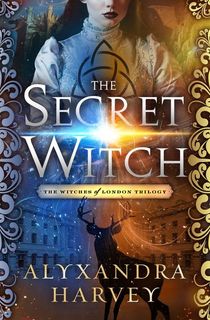Between WitchTok, the hit Netflix series Wednesday, and the pop culture pervasiveness of astrological events like Mercury in Retrograde, witches are having a moment. Historically, we think of witches as women who were unfamiliarly maligned and subjected to terrible torture and punishment. Today, witches have become feminist symbols. “We are the granddaughters of the witches you couldn’t burn,” paraphrased from a Tish Thawer novel, has become the ultimate slogan embodying this sentiment.
And that brings us to witcherature. There is no shortage of books about witches, but in keeping with the themes of witches throughout history, some of the best witchlit titles explore feminism, lore passed down through generations, relationships between women, and resilience in the face of adversity.
In Weyward, Emilia Hart explores the lives of three women from three different time periods. First, we have Altha, who stands accused of using witchcraft to kill a local farmer. Then, against the backdrop of World War II, we have Violet, who is suffocated by societal expectations and wants nothing more than to have access to the same educational opportunities as her brother. And finally, we have Kate, who escapes an abusive partner by fleeing to a countryside cottage inherited from a great-aunt. Kate barely remembers her great-aunt, but she suspects her female relative may have had a secret and the key lays within the cottage itself. As for how the three women are connected, that’s part of the magic of Weyward.
Autumn is truly the season of the witch. To commemorate this time of the year, here’s some more witcherature like Weyward.

Now She Is Witch
Lux has just lost everything—her home ransacked and burned to the ground, her mother murdered because locals believe her to be a witch. In fact, Lux is soon on her way to sharing her mother’s fate. Like mother, like daughter, right? In the eyes of locals, she must be a witch, too. But she’s saved by Else, who needs her help, and together they go on a journey that spans miles.
Because while Lux doesn’t consider herself to be a witch—she’s not evil, after all—she does have a deep knowledge of herbs … and poisons. Logan’s poetic novel takes inspiration from history, when women with special knowledge were persecuted and accused of evil deeds like Altha in Weyward.

The Secret Witch
The first novel of Harvey’s The Witches of London trilogy introduces us to Emma, Gretchen, and Penelope. The cousins are simply doing their best to navigate early 19th century London society, even though they find it stifling and oppressive. But if that got on their nerves, things take a turn for the worse when Emma accidentally breaks a glass memento that once belonged to their mother. Now, all three girls find themselves with magical abilities.
If that weren’t enough, they’ve caught the attention of an evil coven that gains power by killing young and promising witches—like, for example, these three cousins. If Violet’s struggles against societal expectations in Weyward captured your attention, then this young adult fantasy will be right up your alley.

Her Majesty's Royal Coven
In this alternate historical fantasy, Queen Elizabeth I established a secret government organization called Her Majesty’s Royal Coven. Decades ago, Helena, Leonie, Niamh, and Elle pledged to join the department, but in the time since, only Helena remains in the organization. While Helena reigns as High Priestess of the royal coven, Elle tries her best to live a normal life as a housewife while Niamh works as a veterinarian in the countryside, using her abilities to heal animals. Leonie, however, left to start a more inclusive coven, further supporting the impression that Helena’s beloved organization has grown stale and ossified.
But when a young warlock threatens Her Majesty’s Royal Coven, the old friends must decide whether it’s best to preserve tradition above all else or to find another way. Relationships between women—past, present, and future—often serve as the foundation of many witcherature novels. Juno Dawson’s novel is a shining example of that.

Sweet & Bitter Magic
This slow burn queer romantic fantasy revolves around the relationship between Tamsin and Wren. Tamsin is the most powerful witch of her generation but a brush with dark magic resulted in banishment by the coven and being cursed with the inability to love. In fact, the only way she can feel that emotion is by stealing it from others. Wren is a walking magic source who’s spent her entire life hiding her status to care for her ailing father. But when a magical plague steals her father’s memories, she strikes a deal with Tamsin.
Together, they’ll find and defeat the witch responsible for the plague and in exchange, Wren will give Tamsin her love for her father. Sapphic themes can be found in witcherature since, historically, queerness was persecuted and women considered different and “unnatural” were branded witches.

The Once and Future Witches
Harrow’s novel blends the history of witches with the suffrage movement, which is a fitting combination if you think about it. In the late 19th century, witches don’t exist. Not anymore. Great and powerful witches might have lived long ago, but the burnings destroyed them. If witches still exist, it’s only in the form of nursery rhymes and fairy tales.
When sisters James Juniper, Agnes Amaranth, and Beatrice Belladonna reunite and join the suffrage movement, however, they draw upon old traditions passed down to them by their grandmother. And maybe in doing so, bring some magic back into the world. Harrow’s witcherature novel explicitly blends feminist themes—such as obtaining the right to vote—with witches. The Eastwood sisters gain power and agency by delving into hidden family traditions and, of course, by rebuilding their relationships with each other.
Featured image: Bee Felten-Leidel / Unsplash




